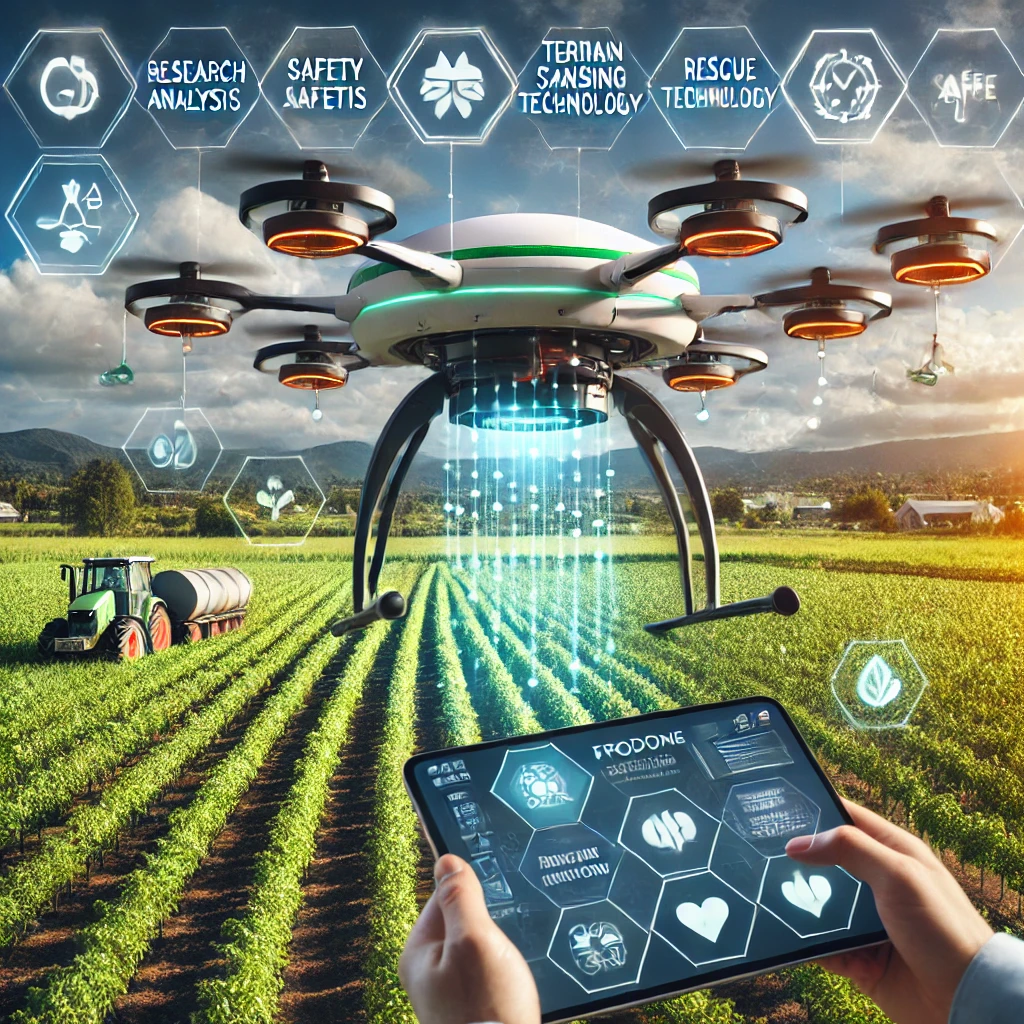Drones also known as Unmanned Aerial Vehicles (UAVs), are fast becoming major players in robotics automation. These flying robots are changing how industries work, offering new ways to do jobs that used to take a long time or were too hard for people. From farms to shipping, drones are proving to be strong tools that boost productivity, cut costs, and make work safer. In this article, we’ll look at how different industries use drones and what good they bring to automation.
What Are Drones in Robotics Automation?
Drones are little flying machines you can control from afar or that work on their own with little human help. In the world of robot automation, drones can do jobs like check buildings, drop off packages, or help out on farms. By making these tasks automatic, drones can speed things up cut down on human mistakes, and let businesses run smoother. They’re so flexible that many industries find them perfect for making their work better.
How Different Industries Use Drones
1. Agriculture: Drones Give Farmers a Hand
In agriculture, drones are causing a revolution in how farmers handle crop production. These drones can fly over fields taking high-resolution pictures and gathering data on soil conditions, crop health, and pest problems. Some drones can even spray fertilizers or pesticides, which cuts down on manual labor and lowers the amount of chemicals used. This allows farmers to work more , which leads to better crop yields and more sustainable farming methods.
2. Logistics and Delivery: Faster Package Delivery
Drones have an impact on the delivery and logistics scene. For instance, Amazon is looking into drone delivery systems to deliver packages faster. These flying machines can avoid traffic jams and get items to their destination more in far-off or tricky-to-reach places. This means deliveries are not just speedier but also cheaper, which is good for both companies and customers. With fewer trucks needed on the roads and less human work involved, using drones to deliver things is a more productive and budget-friendly option compared to old-school methods.
3. Construction: Monitoring and Inspecting Sites
Construction companies are turning to drones more and more to check on their building sites. These flying machines carry top-notch cameras that take pictures and videos from above. This helps project managers keep an eye on how things are going and spot any problems before they get big. By letting drones do these checks, builders save a lot of time cut down on mistakes people might make, and make sure jobs stay on schedule and don’t go over budget.
4. Disaster Response: Saving Lives with Drones
When emergencies strike, drones have a crucial impact on disaster response. Following a natural disaster, camera and sensor-equipped drones can fly above impacted regions to look for survivors, evaluate damage, and transport vital supplies such as food and medicine. Drones’ capacity to access hard-to-reach or risky areas makes them a priceless asset for rescue crews helping to save lives and speed up recovery work.
How Drones Benefit Robotics Automation
1. Speed and Efficiency
Drones can do jobs much quicker than people tasks that need aerial surveillance or monitoring of big areas. Their ability to work on their own or with little human supervision makes them a valuable tool to boost overall productivity across many industries.
2. Cost Savings
By automating jobs that take a lot of time or manpower, drones can help companies cut costs. For example, drones can inspect sites or deliver packages faster than hiring many workers, which cuts labor expenses and boosts profits.
3. Getting to Tough Spots
Drones shine when it comes to reaching tricky or dangerous places that would be risky or off-limits for people. This includes tall buildings, flood zones, or areas hit by disasters. Drones can work in these spots without putting human workers at risk. This makes them useful in fields like building, emergency response, and farming.
4. Gathering Info on the Spot
Drones have the capability to gather and send data making them a valuable asset for sectors where current information plays a key role. Take agriculture or construction as examples – drones can collect vital data helping companies make smart choices and keep their projects running .
The Future of Drones in Robotics Automation
Drone technology is growing fast. As drones get smarter and more able, they open up new doors in automation. In farming, drones might soon plant seeds or watch over bigger farms from above. In shipping, drones could team up to move larger packages or deliver items more . The ways drones can help in robotics automation seem endless, and we’ve begun to see how they’ll change industries.
Challenges Facing Drone Use in Automation
Even with their many benefits, drones still run into some roadblocks in the automation world.
Regulations and Laws:
A lot of places have tough rules about where and how people can fly drones. This puts a damper on using them in busy city areas or crowded spots. As drone tech gets better, these rules might need an update to let more industries put drones to work.
Battery Life:
A big problem with drones is how long their batteries last. Most drones can fly for a short time before they need to charge up again. This limits how far drones can go or how long they can work without stopping. Companies wanting to use drones for bigger jobs need to think about this.
Data Privacy:
Drones gather lots of data, which makes people worry about privacy. Companies and rule-makers need to deal with these worries. They must make sure drone data stays safe and private. This is really important in fields like building or farming where the information could be sensitive.
